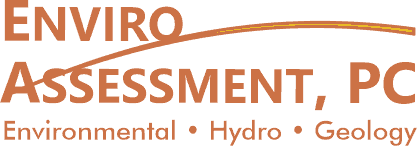
Septic System Design
Each State allows different types of wastewater treatment and disposal systems for use in subsurface effluent discharge. These systems include standard absorption
trenches, deep absorption trenches, at-grade absorption trenches, sand-lined absorption trenches, gravelless absorption trenches, elevated sand mounds, intermittent sand filters, recirculating sand filters, recirculating trickling filters, evapotranspiration absorption systems, evapotranspiration systems, aerobic wastewater treatment units, chemical nutrient reduction systems, and experimental systems. Systems providing advanced treatment or greater separation to a limiting layer may be used where standard absorption trenches are acceptable.
Many of these systems also have specific application to solving particular problems. Deep absorption trenches are used to break through an impervious soil layer and allow effluent to infiltrate a deeper and more permeable soil. The bottom of the trench must not be more than five feet below natural ground surface. At-grade absorption trenches are used to achieve the minimum separation distance between the bottom of the trench and a limiting layer and may be used as long as the four-foot separation can be maintained. These systems may be used only for residential strength wastewater and for flows not exceeding 500 gallons per day. Sand-lined absorption trenches are used where the percolation rate is faster than three minutes per inch or for rapid or slow permeability situations. Gravelless absorption trenches are used in lieu of standard absorption trenches within the limitations provided in this circular. Elevated sand mounds are used to provide advanced treatment of septic tank effluent and/or to achieve the minimum separation distance between the bottom of the drain rock and a limiting layer. Intermittent sand filters are used to provide advanced treatment of septic tank effluent and are typically used on small systems. Recirculating sand filters are used to provide advanced treatment of septic tank effluent and are typically used on large wastewater systems. Recirculating trickling filters are used to provide advanced treatment of septic tank effluent. Evapotranspiration absorption systems are used where slow percolation rates or soil conditions would preclude the use of a standard absorption trench. Evapotranspiration systems are used where slow percolation rates or soil conditions would preclude the use of a standard system. Aerobic wastewater treatment units are used to provide advanced treatment of septic tank effluent or to provide treatment equal to or better than a septic tank. They may also be used to provide treatment of high strength wastewater. Chemical nutrient reduction systems are used to provide advanced treatment of septic tank effluent. The monitoring frequency must be sufficient to establish the treatment efficiency and response to varying wastewater flows, strengths, and climatic conditions.
Perc Testing (Site Evaluation for Wastewater Treatment Disposal)
Information concerning soil and site conditions is needed for the design of subsurface wastewater treatment systems. Those factors which must be evaluated are thickness of permeable soil above seasonally high ground water, bedrock or other limiting layer, soil properties, land slope, topographic position, flooding hazard and amount of suitable area available, and setback distances required in ARM Title 17, chapter 36, sub chapter 3 or 9. For systems with a design wastewater flow greater than 1,000 gallons per day, the potential for ground water mounding must be evaluated.
Part of that evaluation is a Perc Test or Percolation Test. Percolation tests, if required, must be conducted at the approximate depth of proposed construction. For elevated sand mounds and at-grade systems, the depth of the percolation test hole must be 12 inches. Additional percolation tests may be required to determine the existence of a limiting layer. The percolation tests must be performed in accordance with the procedures defined by the Department of Environmental Quality in your state. When the proposed replacement area is not immediately adjacent to the primary absorption system, at lease one percolation test must be conducted within the boundaries of the replacement area. When more than one percolation test is conducted within the boundaries of a proposed absorption system, the percolation rate will be determined based on the arithmetic mean of the percolation test values.

